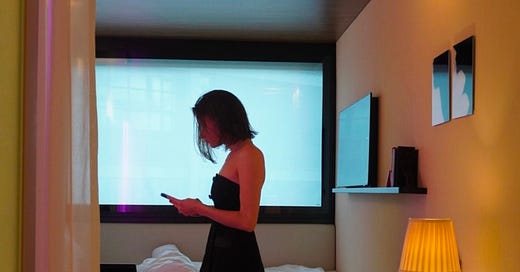Five Things No One Tells You About Being a Creator
Notes from the frontlines of building online.
Welcome to Creator Economy Dispatch, where research meets reality. Insights, interviews, and observations on how creators, brands, and platforms actually work together—part case study, part cultural commentary.
From the outside, it looks like a dream job. Flexible schedule, loyal audience, occasional brand deal, maybe even a free trip to Monaco. But that’s the highlight reel—and in the creator economy, the more effortless something looks, the more work it probably took to pull off.
People underestimate creators because the product—content—asks to be liked, not respected. But the job itself? It’s brutal. It’s creative, analytical, emotional, and operational, all at once. It’s also greedy. This work will take as much time, energy, and attention as you’re willing to give it. And unless you’re at the point of having a full team, you’re doing it mostly alone.
Here are five things I’ve learned the hard way:
1. You are both the product and the business.
You’re the face, the strategist, the editor, the negotiator, the one replying to DMs at midnight and updating your media kit in the back of an Uber. It’s not just “make content”—it’s build a brand, maintain distribution, manage risk, protect energy, stay relevant. All while growing the skin it takes to be seen and not shattered. You make peace with being misunderstood. Then you hit publish anyway.
2. Repeatable formats are your leverage.
The smartest creators don’t reinvent the wheel every week. They create lanes. Series, frameworks, recurring formats. These aren’t constraints; they’re scaffolding. The more consistent your structure, the more creative freedom you get inside it. You don’t need everyone. You need the right people coming back.
3. Your real growth isn’t vertical. It’s horizontal.
Everyone obsesses over follower count. But the gold is in what happens between your followers—not just what flows from you to them. True community isn’t just a one-to-many broadcast; it’s when your audience starts talking to each other.
For me, that’s happened mainly in Discord, watching people dissect races together, meet up IRL, even become actual friends. That’s the connective tissue many creators overlook. But it’s what turns audiences into ecosystems. And in a sea of content, that’s the moat that matters.
4. A community of creator friends will save you.
This job is lonely. Your friends with normal jobs won’t really get it. Some will judge it. Having a group of people in your lane—people you can send drafts to, laugh about flops with, and gut-check your rates with—is invaluable. Share your playbook. You’ll get theirs too.
5. Competition is a distraction.
The internet isn’t zero-sum. Your audience won’t pick one voice. They’ll follow whoever feels honest, relevant, or necessary. And the real risk isn’t overlap. It’s isolation. Collaboration scales faster than paranoia, and no one builds staying power by trying to outdo everyone else.
I’m not a big creator. I’m still early in this journey, figuring things out post by post, project by project. But these are the lessons that have stuck with me so far—the ones I return to when the algorithm shifts, the inbox is quiet, or the self-doubt creeps in. I hope they’re helpful if you’re building online too. And if you’ve got lessons of your own, I’m all ears.






I was just talking to a friend about this. We’re both only a few months in and having someone to talk to who gets it? So important. And this community of F1 women has been amazing. It doesn’t mean the work isn’t hard, but like you said, it’s easier with friends.
What you said about creating a community really resonated and was so timely - thank you ❤️ Right now, it still feels difficult but knowing there’s an opportunity to translate virtual friends to IRL and it was definitely the right message at the right time!